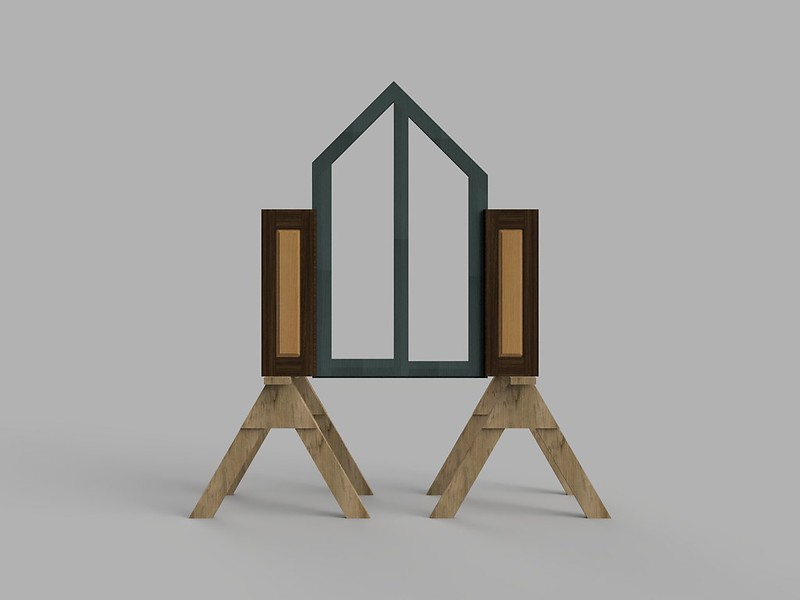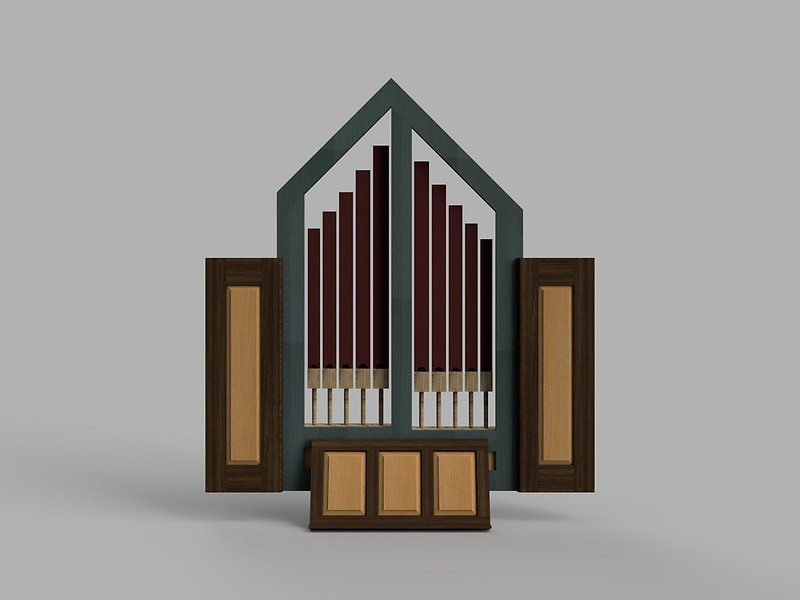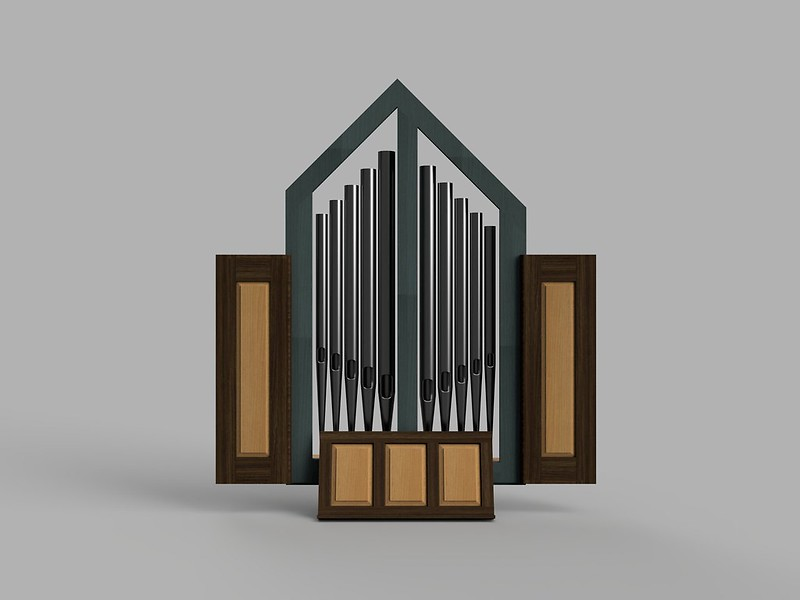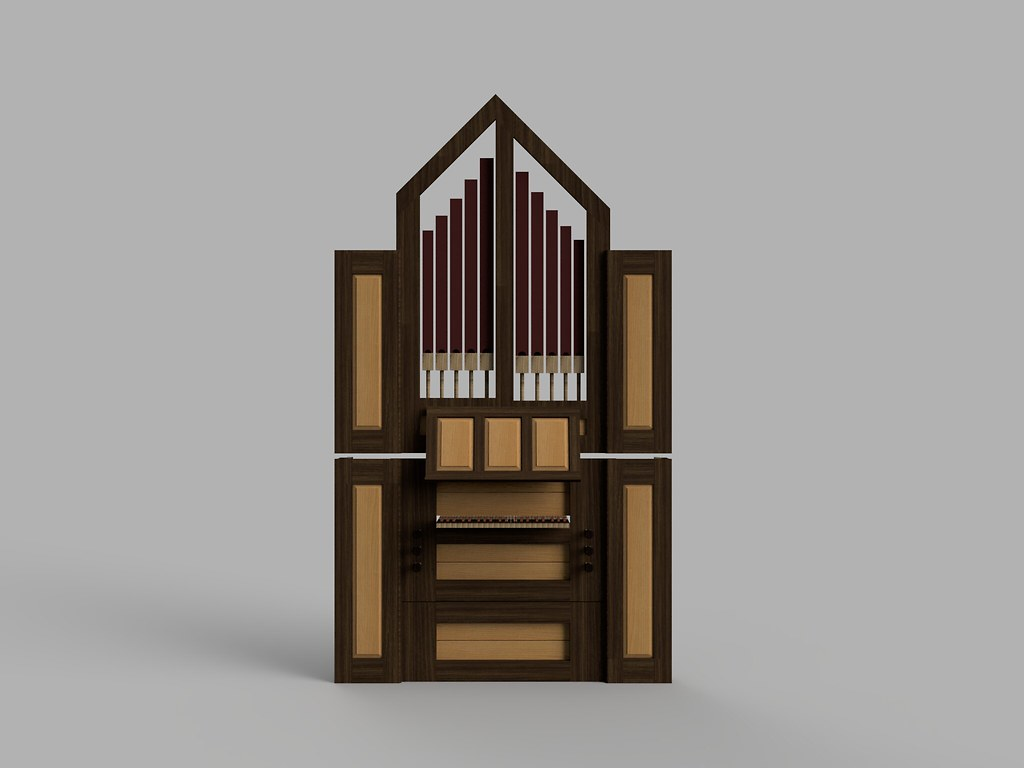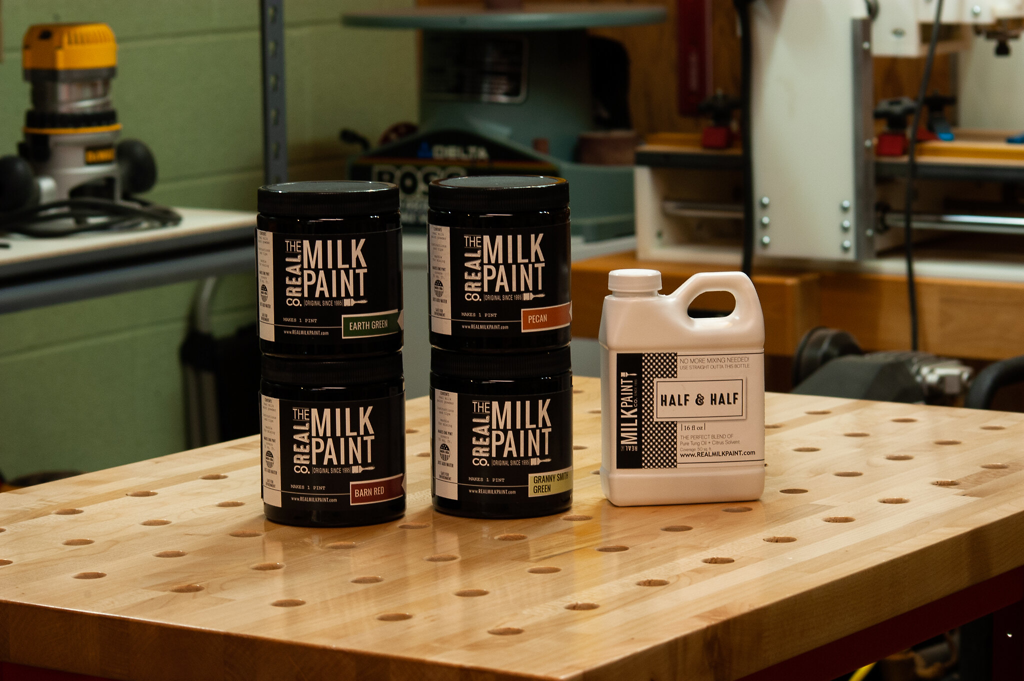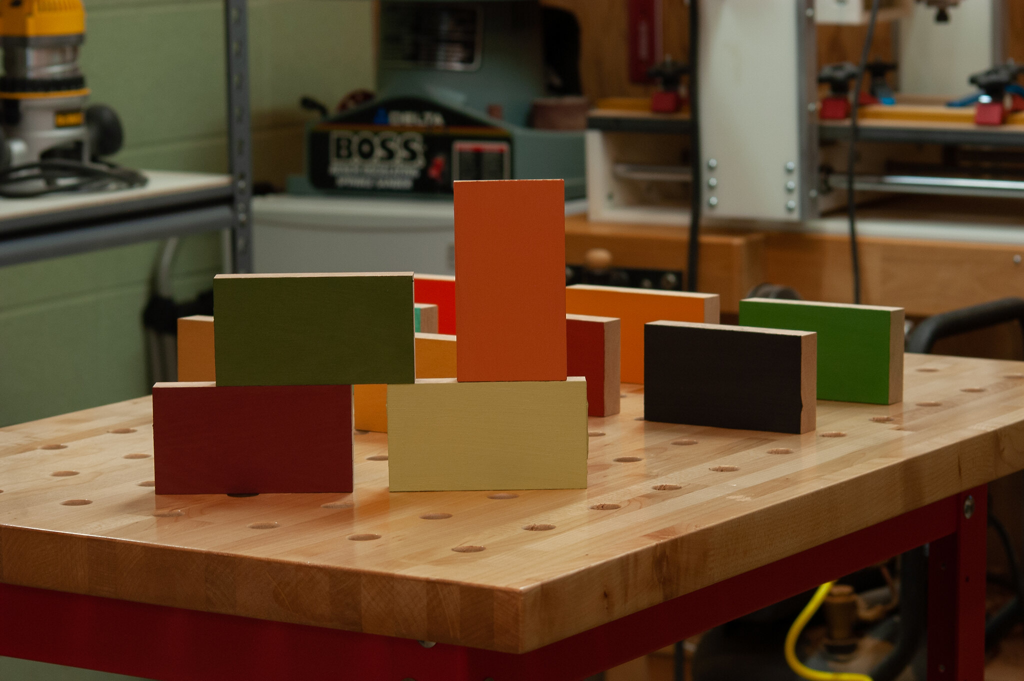A Functional Stop List for Accompaniment
![]() August 23, 2025 12:03
August 23, 2025 12:03
In a series of blog posts, I plan to conduct a design study, conceptually building a very real church an organ it didn't ask for, using pipes taken from their existing mid-industrial era gallery organ. This design study allows me the opportunity to build out, if only on paper, an example of my 43-note continuo for a space I know well, from material I know well. I was an organist there for eight years. If you are new to my project, start here and work your way up.
For the organ I am building, I propose the following stop list if we decide on wood pipes in the front of the case.
Stopped Diapason 8
Flûte triangulaire 4' bass
Principal 4' discant
Melodia 4' discant
Mixture III
This list proposes a break between bass and treble at tenor-f for the 4' stops, with the treble stops sharing a common bass. Each two 4' treble stops are drawn separately or together with their corresponding bass stop drawn. The bass stop is not intended to sound similar to the treble stops except where the treble stop extends it, a common practice with small instruments during the mid-nineteenth century. This Hall & Labagh chancel organ is a great example.
If we decide that metal pipes are appropriate in the front, I propose the following stop list that completes the 4' principal rank from bass to treble as the Hall & Labagh did. The 4' here is softer in tone, so its bass pipes complement the Melodia 4' treble.
Stopped Diapason 8
Principal 4' bass
Principal 4' discant
Melodia 4' discant
Mixture III
The Mixture III is there to provide a resplendent upperwork.
Every organization has value available to it in what is called latent capacity. Not every organization taps into that capacity or its value because doing so often requires structural changes that are usually difficult to grasp or implement.
Here is an example of how that applies to the 43-note continuo. Reed stops are not practical additions to the 43-note design. I can innovatively harness a trumpet or clarinet player to substitute, though. I can develop a community of musicians with their capacity to produce value. More people mean more inclusion.
In this way, the 43-note continuo invites community and inclusion.
Posted August 23, 2025 12:03
Add Your Comment
Reuse and Recycle: The Story of a 43-Note Build
by Steve Panizza
Recent Blog Entries
Archive
